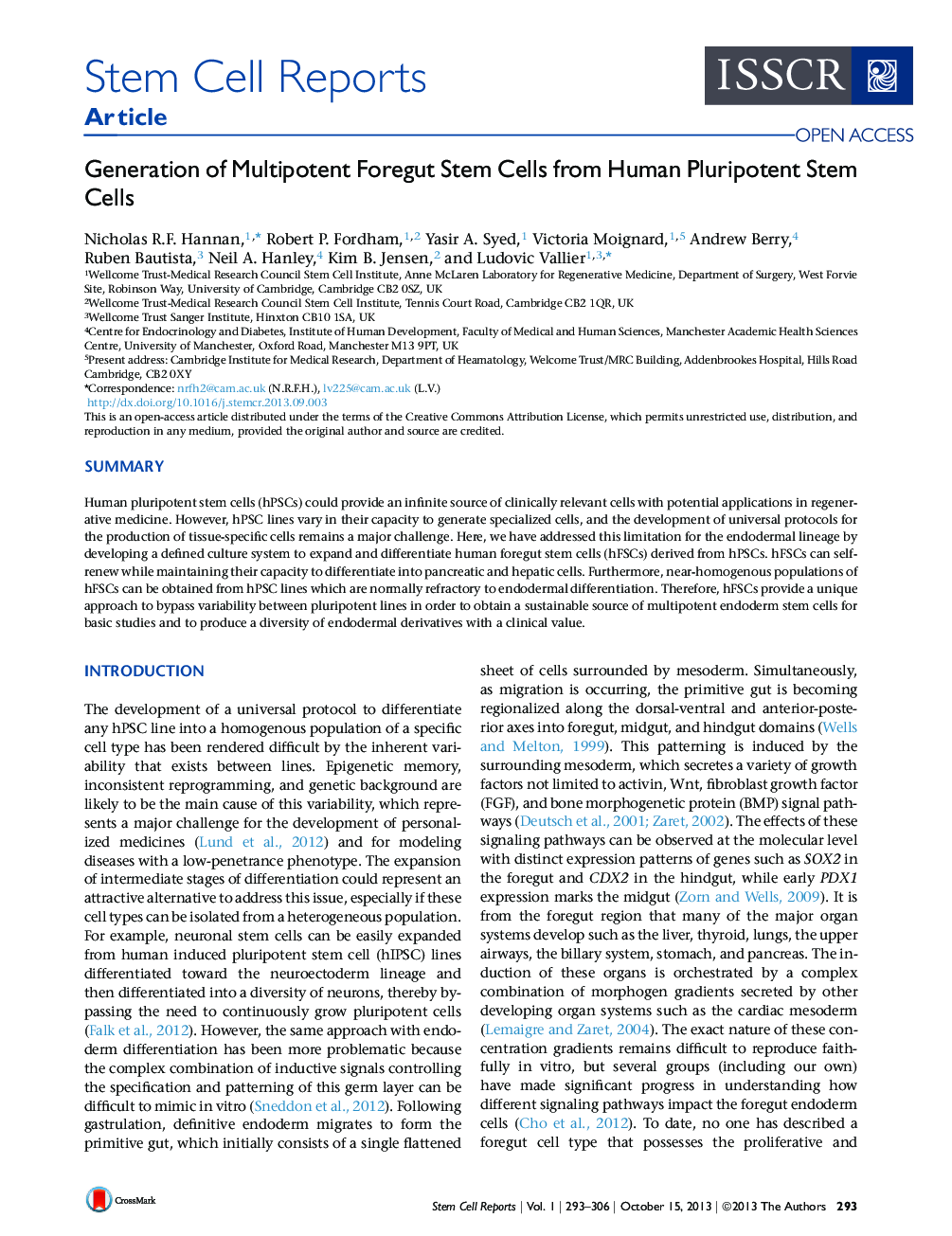| Article ID | Journal | Published Year | Pages | File Type |
|---|---|---|---|---|
| 2093839 | Stem Cell Reports | 2013 | 14 Pages |
•Multipotent foregut stem cells are derived from pluripotent cells•Foregut stem cells can be expanded and retain their differentiation potential•Foregut stem cells differentiate into liver and pancreatic cells•Foregut stem cells decrease differentiation variability between cell lines
SummaryHuman pluripotent stem cells (hPSCs) could provide an infinite source of clinically relevant cells with potential applications in regenerative medicine. However, hPSC lines vary in their capacity to generate specialized cells, and the development of universal protocols for the production of tissue-specific cells remains a major challenge. Here, we have addressed this limitation for the endodermal lineage by developing a defined culture system to expand and differentiate human foregut stem cells (hFSCs) derived from hPSCs. hFSCs can self-renew while maintaining their capacity to differentiate into pancreatic and hepatic cells. Furthermore, near-homogenous populations of hFSCs can be obtained from hPSC lines which are normally refractory to endodermal differentiation. Therefore, hFSCs provide a unique approach to bypass variability between pluripotent lines in order to obtain a sustainable source of multipotent endoderm stem cells for basic studies and to produce a diversity of endodermal derivatives with a clinical value.
